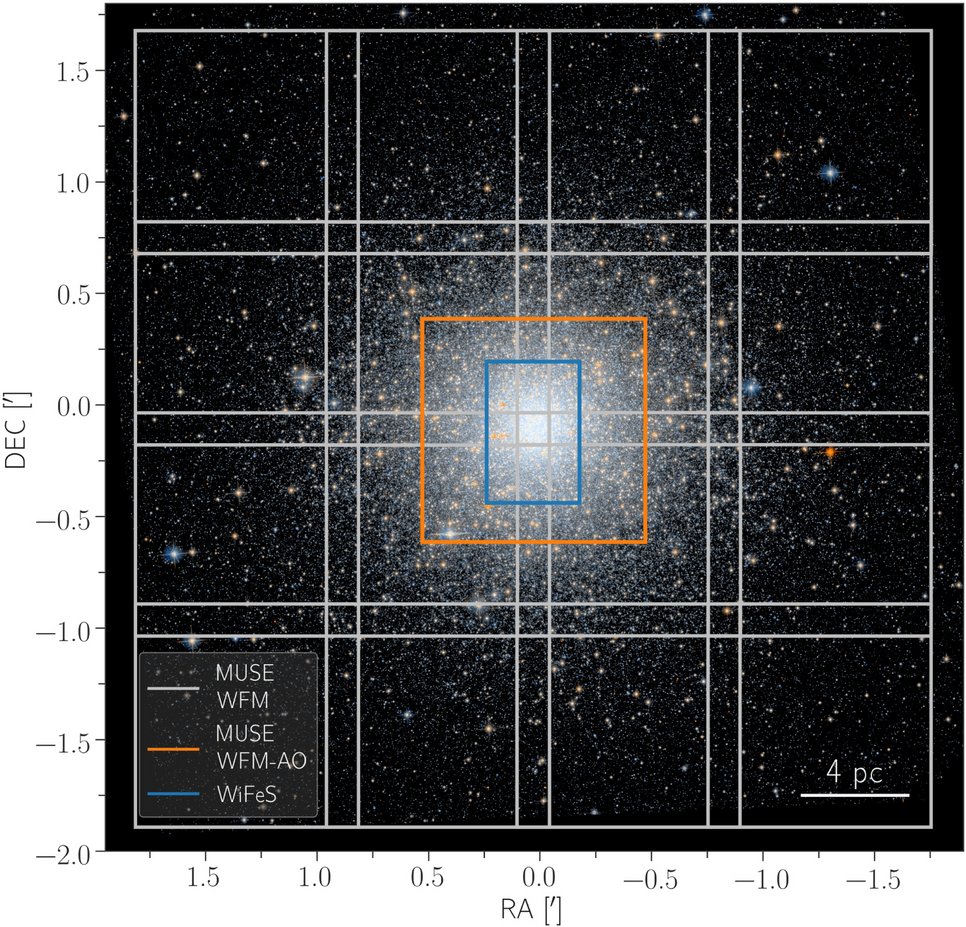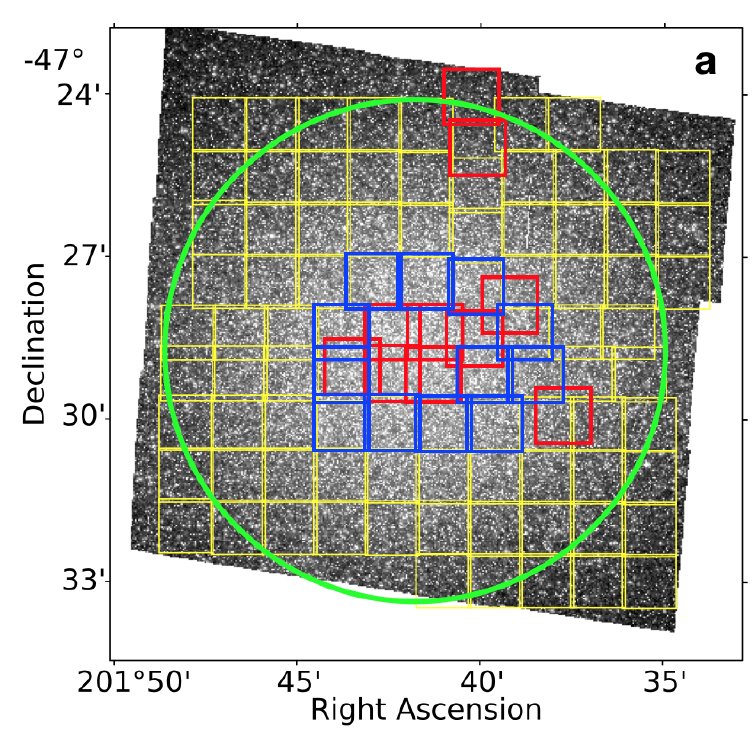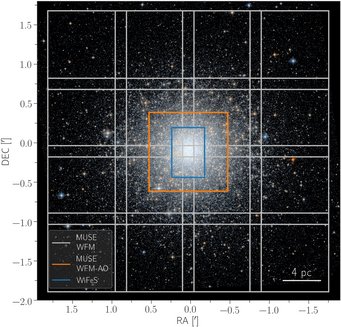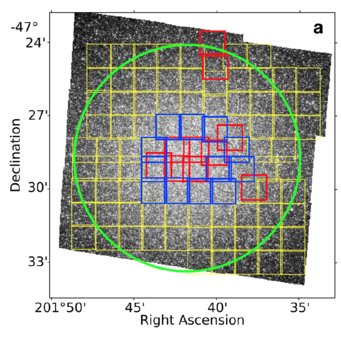Stripped Nuclei

Messier 54 (M54) is the nucleus of the Sagittarius dwarf spheroidal galaxy, which is in the process of merging with the Milky Way. Our group has acquired and analysed a large MUSE mosaic of the cluster, which covers about 2.5 times its effective radius, as well as AO assisted WFM and NFM data of its centre. Over 6000 individual stars were extracted from the MUSE datacubes to determine individual stellar metallicities and ages as well as their kinematics (Alfaro-Cuello et al, 2019 & Alfaro-Cuello et al., 2020). These studies revealed that M54 had a complex formation history: young (1-2 Gyr) and metal-rich (0.0 dex) stars with significant rotational support, which are more centrally concentrated, are present on top of a predominant stellar population with old (>10 Gyr), metal-poor (<1.5 dex) and random motion supported stars. M54’s stellar population properties were also studied by analysing its integrated spectrum from the same MUSE data set (Böcker et al., 2020). The extracted age-metallicity distribution from the integrated spectrum alone shows the same complex formation history as the ages and metallicities of the individual stars. On-going work focuses on chemo-dynamical modelling of M54 (Kacharov et al., in preparation) as well as investigations of its potential IMBH (Alfaro-Cuello et al., in preparation). Thus, M54 is an important asset in understanding the formation mechanisms of nuclear star clusters as well as connecting resolved and integrated stellar population analysis.

Omega Centauri (ω Cen) is the most massive globular cluster of the Milky Way and has long been suspected to be a stripped of nuclei of a dwarf galaxy that merged with our Galaxy.
Evidence of that is the complexity of the cluster with multiple stellar populations, multiple sequences in the color-magnitude diagram and large spread in metallicity and age.
In this work we study ω Cen with MUSE and HST data in order to investigate the different stellar populations and its formation history.
We will have information on the metallicity, age, radial velocity and proper motions of thousands of stars allowing us to get valuable information on its formation and merger history with our Galaxy.
Data: MUSE/VLT, HST
For more information, please contact Maximilian Häberle (HST data) and Selina Nitschai (MUSE data).

